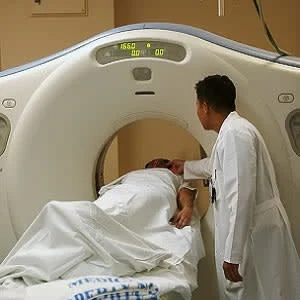Expert recommendations for the evaluation, interpretation, and use of computed tomography enterography (CTE) and magnetic resonance enterography (MRE) in small bowel Crohn’s disease are published in the March 2018 issue of Radiology. The guidance is issued by an expert panel formed by the Society of Abdominal Radiology (SAR).
The guideline establishes "a common system for mapping specific imaging findings to clinically useful impressions and for description of Crohn’s disease phenotypes that can guide gastroenterologists and surgeons in making important treatment decisions for Crohn’s disease patients," according to the panel.
CTE and MRE are useful tools for Crohn’s disease diagnosis, determining distribution of disease involvement, and detecting complications of the disease. The selection of CTE or MRE will vary according to a variety of factors, including patient preference, age and clinical presentation and concerns, imaging availability, and local expertise, and have been addressed, in part, in practice parameters published jointly between radiology societies.
Each recommendation in the expert document is accompanied by a description of the strength of the recommendation (i.e., strong vs. weak), with strong recommendations having anticipated desirable effects on patient outcomes. These recommendations set forth imaging criteria for the imaging diagnosis of Crohn’s, as well as describing its severity and complications at CTE and MRE.
Morever, the guideline recommends that cross-sectional enterography should be performed at diagnosis of Crohn’s disease to detect small bowel involvement that may not be identified by other methods.
Because intramural T2 hyperintensity, restricted diffusion, peri-enteric stranding, wall thickness and mural ulcerations seen at cross-sectional enterography generally correlate with severity of endoscopic and histologic inflammation, the guideline says radiologists should comment on these findings and describe them when present.
The guideline includes a useful morphologic construct describing how imaging findings evolve with disease progression and response is described, and standard impressions for radiologic reports that convey meaningful information to gastroenterologists and surgeons.
Source: Radiology
Image Credit: Pixabay
References:
Bruining DH et al., Society of Abdominal Radiology Crohn’s Disease-Focused Panel (2018). Consensus Recommendations for Evaluation, Interpretation, and Utilization of Computed Tomography and Magnetic Resonance Enterography in Patients With Small Bowel Crohn’s Disease. Radiology, March 2018, 286:3 https://doi.org/10.1148/radiol.2018171737
Latest Articles
MRE, CTE, Crohn’s disease, computed tomography enterography, magnetic resonance enterography
Expert recommendations for the evaluation, interpretation, and use of computed tomography enterography (CTE) and magnetic resonance enterography (MRE) in small bowel Crohn’s disease are published in the March 2018 issue of Radiology. The guidance is issue







